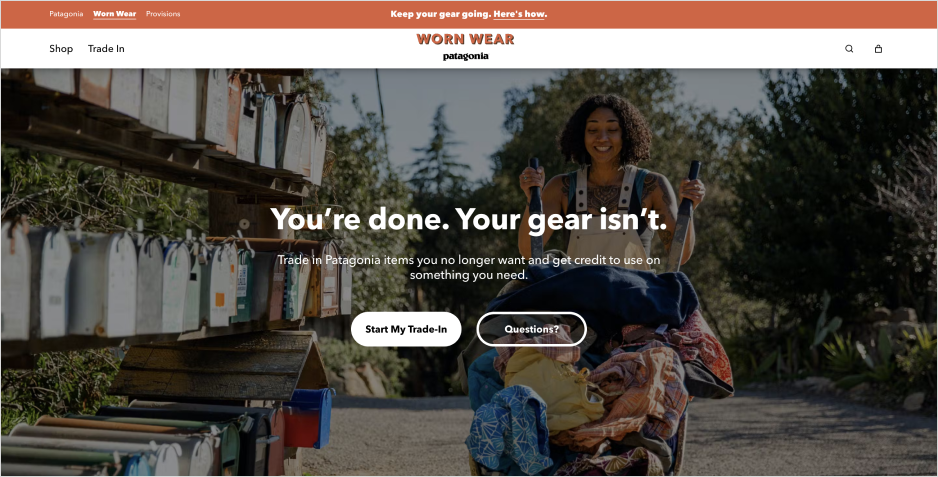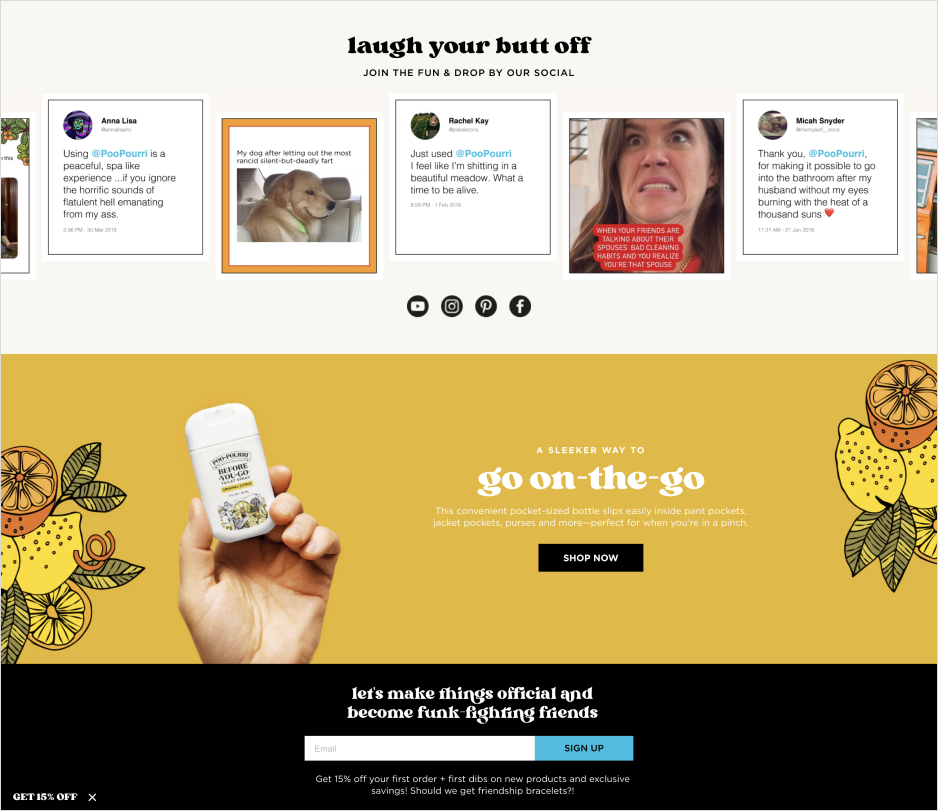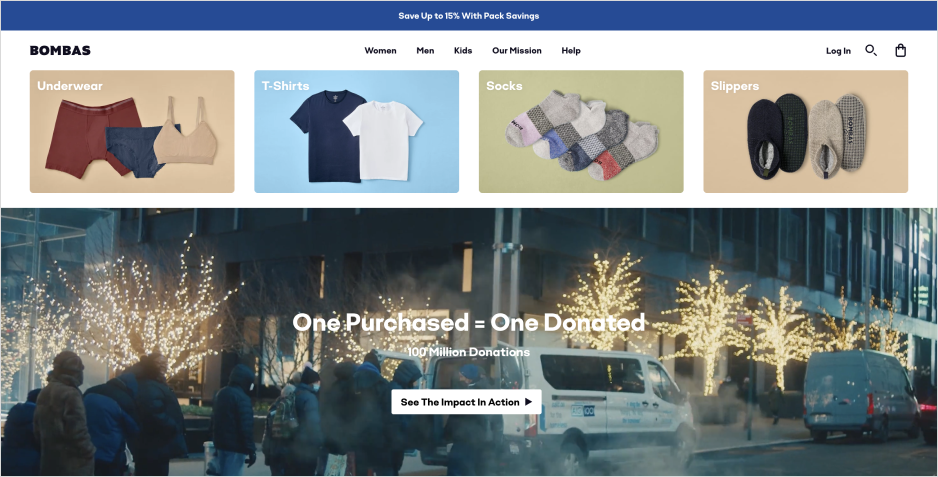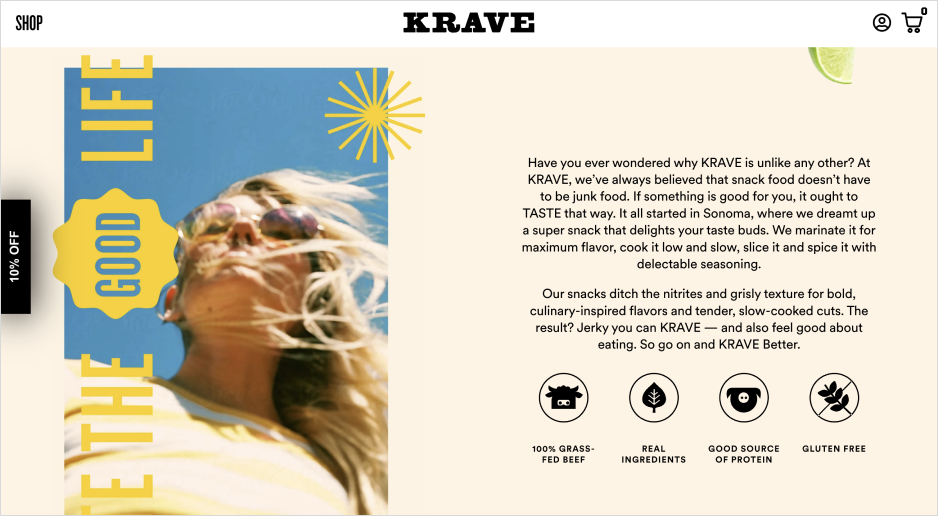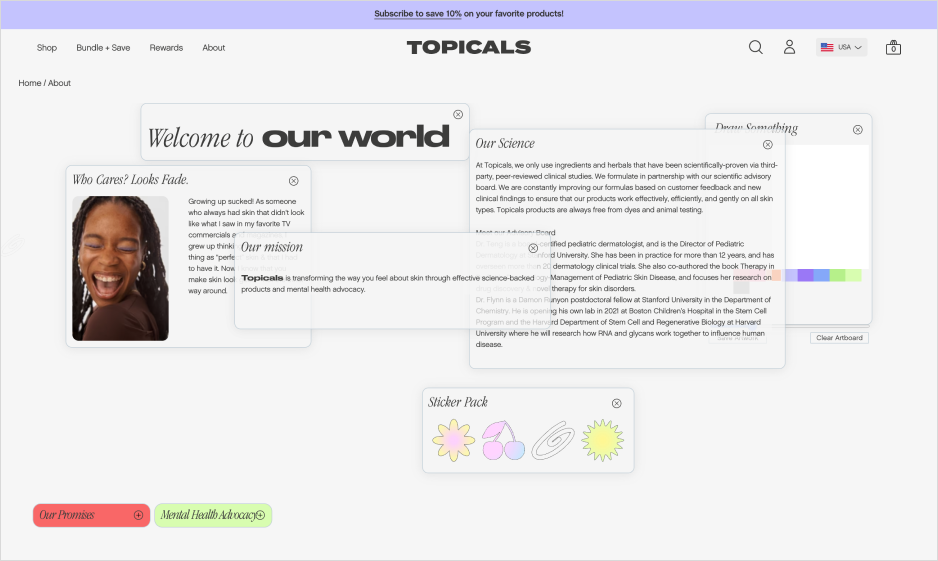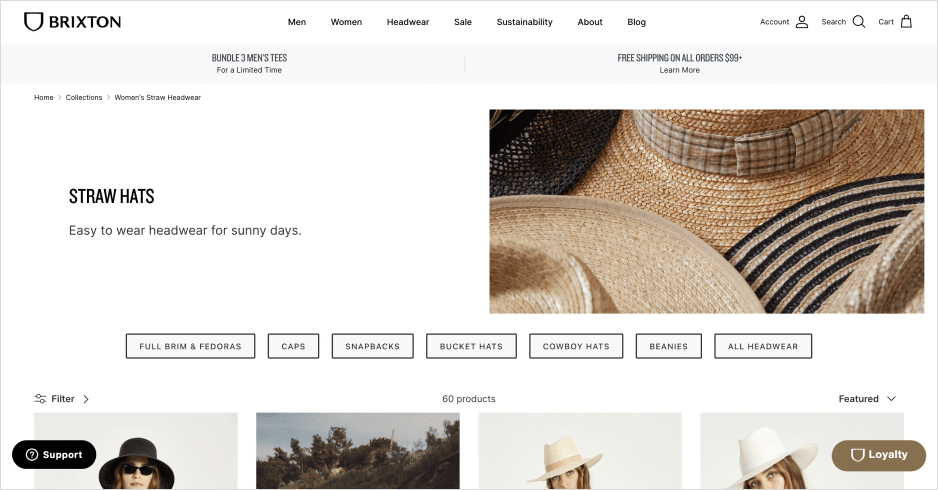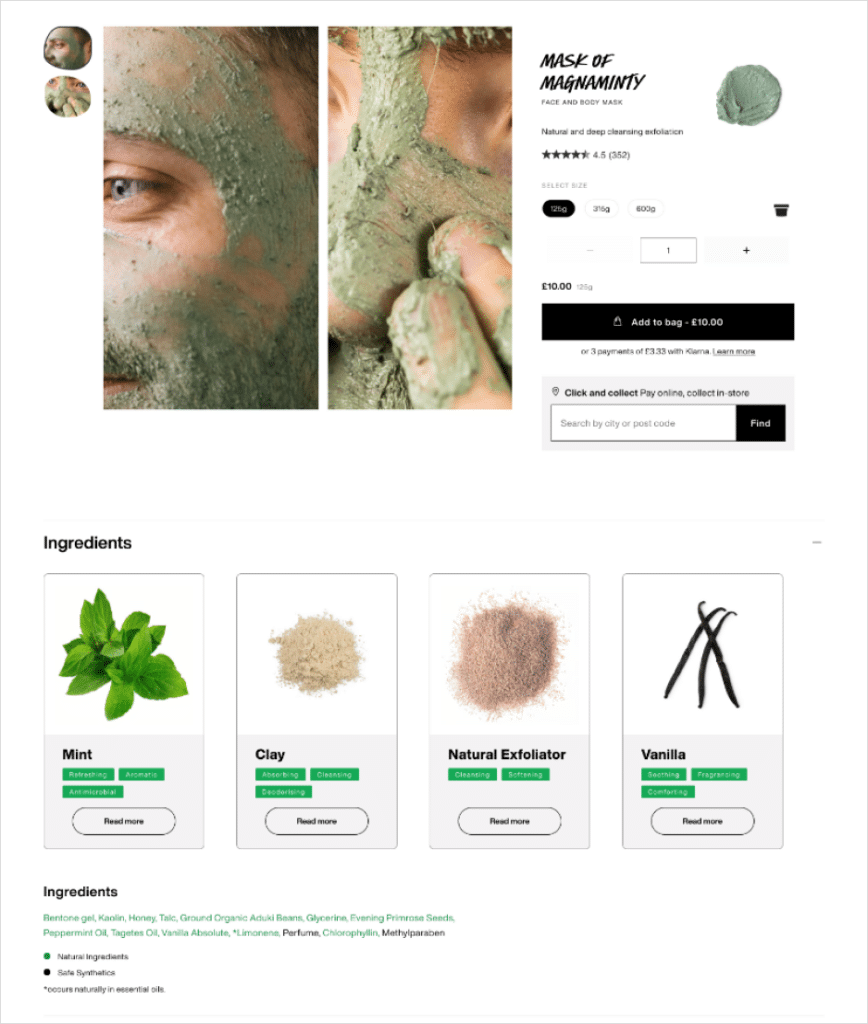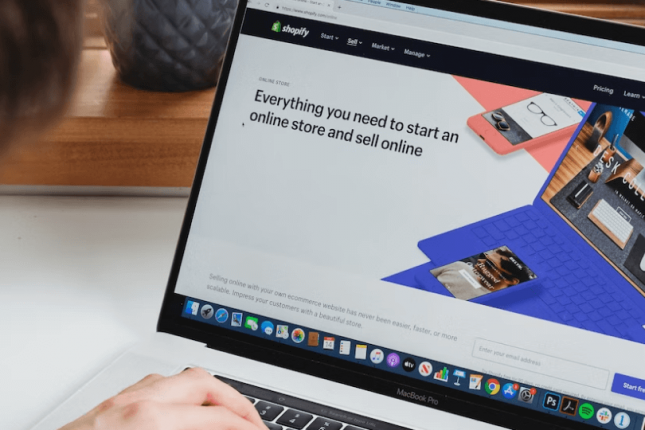In the realm of the 21st century, marketing is hailed as the greatest art form. To harness the full potential of your ecommerce website, it is crucial for online store owners to tap into the power of ecommerce copywriting.
Table of contents
- What Is Ecommerce Copywriting?
- Effective Ecommerce Copywriting Tip
- Copywriting For Different Pages On Your Ecommerce Site
– Home Page
– About Us Page
– Category Pages
– Product Pages - The Benefits Of Well-Written Ecommerce Copywriting
- Hacks To Improve Your Ecommerce Copy
- FAQs
- Final Thoughts
What Is ecommerce Copywriting?
Ecommerce copywriting plays a vital role in optimising product pages. It encompasses various formats, from landing pages to product descriptions, and is aimed at driving users toward making a purchase.
High-quality ecommerce copy has the ability to drive a substantial amount of traffic to your online store and, most importantly, convert that traffic into sales.
So, how can you transform your content into a lucrative art form?
Effective ecommerce Copywriting Tips
1. Be Specific and Keep It Simple.
Avoid the temptation to produce complex copy to establish authority. Instead, use language that is accessible and simplistic, catering to a larger target audience.
2. Create Compelling CTAs.
Calls to action (CTAs) are a basic feature of eCommerce stores, but they can be incredibly powerful. Data analysis suggests that using a CTA, such as a “Buy now” button, is three times more likely to result in a user making a purchase. Techniques such as instilling a sense of urgency, using authoritative phrases, and tapping into user emotion and intent can make your CTAs more compelling.
Tailored CTA buttons effectively engage your specific audience. Customised calls to action outperform ordinary CTAs by a remarkable 202%.
They swiftly seize attention and promptly guide users to their intended destination, bypassing any navigational confusion.
Worn Wear employs distinct CTA variations, such as ‘Initiate My Trade-in’ and ‘Discover Trade-in Benefits’, to entice different user segments. For instance, the CTA aimed at first-time visitors (benefits) will differ from the one targeting potential customers (initiate).
NOTE: An irresistible CTA usually encompasses a concise 30-character limit, counting spaces, which translates to approximately two to five impactful words.
3. Use Positive Wording.
Positive wording that appeals to the emotions of visitors instantly reassures them that they have come to the right place. For example, instead of saying “the home of cheap family holidays,” say “make massive savings on your dream family getaway.” Focus on conveying the benefits rather than simply stating the features of your products.
4. Stand Out from the Crowd.
With millions of eCommerce stores in operation, it is essential to differentiate yourself. Highlight what benefits you provide that others don’t, communicate your values, and develop a unique tone of voice (TOV).
5. Avoid Negative Language.
While negative language can have its virtues, it is best to avoid it in eCommerce copywriting. Positive language contributes to top-quality copy that entices the maximum number of users.
6. Find the Perfect Tone of Voice.
Discovering the ideal tone of voice for your niche is crucial for generating, retaining, and converting organic traffic into customers. Conduct customer research to uncover what your audience wants and develop interesting copy that keeps visitors engaged.
One noteworthy example of effective copywriting can be seen in the brand Pourri, renowned for their product Poo-Pourri. They excel at integrating their brand’s distinctive tone and style throughout their copy.
The significance lies in Pourri’s commitment to maintaining consistent language across their entire website. Whether it’s the homepage, product page, or about page, their language and style remain unified.
NOTE: When crafting copy for different sections of your website, it is crucial to maintain consistency. Constantly switching between tones and styles can confuse your audience and dilute your brand’s identity.
7. Express Your Values.
Conscious consumerism is on the rise, and shoppers are drawn to online stores that align with their values. Don’t hesitate to showcase your values in your copy, as it helps build brand personality and target your audience more precisely.
For example, Bombas is a brand dedicated to creating comfortable essentials while making a positive impact. For every item sold, whether it’s socks, underwear, or shirts, Bombas donates a matching item to those experiencing homelessness.
Bombas’ copywriting is skillfully tailored to resonate with their audience. When discussing their mission, they involve their audience in the narrative.
By incorporating this style of copywriting, Bombas appeals to their audience’s philanthropic nature and emphasizes how their purchase contributes to a meaningful cause.
NOTE: When crafting copy for your website, always keep your audience in mind. Your copy should speak directly to those who are most likely to become your customers.
Copywriting for Different Pages on Your ecommerce Site
When it comes to your eCommerce website, effective copywriting plays a crucial role in driving conversions and establishing your brand identity. Let’s explore the key pages that require compelling copy and the benefits it brings, along with some tips on how to enhance your copywriting skills.
Home Page
Your eCommerce homepage sets the first impression for visitors. To make a great start, your copy should fulfil four main functions within 200-600 words:
- Welcome and engage customers
- Align with user intent and provide direction
- Establish brand identity
- Incorporate the main target keyword into the Meta Title and Meta Description.
When it comes to making a purchase from a brand new to them, shoppers often experience hesitation and seek reassurance before taking the plunge.
Krave Jerky employs a dedicated section on their Home Page that effectively highlights what sets them apart from the competition, utilising captivating and persuasive language to convey their unique value proposition.
About Us Page
The About Us page isn’t just another page on your eCommerce website; it represents a golden chance to craft your business narrative with precision.
The About Us page serves as an introduction to your brand. It’s the perfect place to communicate your values, tone of voice, purpose, and what makes you stand out from the competition. Think of it as the blurb that connects with your user base and enhances your brand image.
My Topicals excels at constructing an original narrative that delves into a problem statement and subsequently highlights the brand’s commitment to addressing that issue.
In addition to the distinctive arrangement of various components on their “about us” page, My Topicals has mastered the art of captivating copywriting. They effectively encapsulate their mission to promote inclusivity (tailored for every complexion), demonstrate their dedication to mental health advocacy, recount a personal anecdote (beauty transcends appearances), and seamlessly integrate scientific evidence (backed by peer-reviewed clinical studies).
Besides having an About Us page, brands have the opportunity to create distinct landing pages that offer a glimpse into their inner workings.
Certain brands delve into the intricate details of their manufacturing process or the creative ideation behind their products. Others highlight their unique company culture and the various employee programs they offer.
Category Pages
Category page copy serves two purposes: informing users and signaling to search engines what the page is about. Keep it succinct, using a maximum of 100 words, to convey the category’s topic effectively. Showcase your company’s authority and increase conversion rates by using emotive language and emphasising what sets your products apart.
While some brands simply summarise or list the products within a category, thinking it will improve their product page’s SEO, this approach can actually hinder the shopping experience by adding to the scrolling and causing interruptions.
Brixton, on the other hand, takes a different approach by implementing category copy that not only informs shoppers about the specific product they’re viewing but also generates excitement that drives them to make a purchase.
Observe how they introduce each category with captivating copy that effectively incorporates a primary keyword while showcasing their inspiration and unique personality.
Moreover, when shoppers navigate to a sub-category, the category copy dynamically adjusts to reflect the relevant information.
Product Pages
The product page is the final step before making a purchase, making it the most critical section of your site. Use this opportunity to highlight your product’s unique selling points and the benefits customers can expect. Aim for concise and informative copy, ranging from 50 to 200 words, to increase your chances of securing a sale.
Here is an example from Lush:
Lush prides itself on its commitment to ethical practices that prioritize the well-being of animals, and its product descriptions align with this core value.
Unlike numerous other cosmetic retailers, Lush goes above and beyond to ensure transparency regarding the ingredients used in its products. Each ingredient is clearly and prominently listed on the respective product page.
By doing so, Lush not only addresses customer apprehensions about product ingredients but also highlights the unique selling proposition of incorporating natural elements into its formulations.
When it comes to crafting unparalleled product descriptions, Lego stands out as a prime exemplar worth studying. Lego showcases a copywriting prowess that empowers potential buyers with comprehensive insights, enabling them to make well-informed purchasing choices.
Lego ingeniously presents their product descriptions in a concise bullet point format, allowing online visitors to effortlessly grasp vital details in a reader-friendly manner. By condensing essential information into digestible morsels, Lego ensures a seamless browsing experience that keeps customers engaged.
The Benefits of Well-Written ecommerce Copywriting:

- 1. Improve Conversions. Effective eCommerce copywriting correlates with higher conversion rates. By delivering informative, engaging, and user-oriented copy, you increase the likelihood of converting search engine traffic into sales.
- 2. Establish Authority. Well-crafted eCommerce copy conveys essential information about your products concisely and engagingly. This not only attracts more traffic but also helps establish market authority and build a loyal customer base.
- 3. Enhance SEO: Skilled eCommerce copywriters optimize their content for SEO. Well-optimized, keyword-rich, engaging, concise, informative, and actionable copy can provide a significant SEO boost. Additionally, it improves your site’s architecture and navigation, further enhancing your search engine ranking.
- 4. Define Company Identity: High-quality copywriting seamlessly communicates your brand’s identity and offerings. Consistently producing top-notch content helps enhance your position in search engine results and establishes your brand as a focal point within your niche market or community.
Hacks To Improve Your Ecommerce Copy
1. Understand Your Audience.
Thoroughly research your potential customers, understand their intent, and refine their experience and journey. Tailor your product and service copy accordingly to boost sales effectively.
2. Tell a Compelling Story.
If you have a story to share, use it to connect with your desired user base and establish trust and authority. Authentic storytelling can be a powerful tool when done right.
3. Utilize Action Words.
Don’t shy away from using strong action words in your copy. Calls to action exist for a reason—they work and contribute to increased sales.
4. Avoid Fluff.
Good copy conveys personality, information, value, and action concisely. Avoid unnecessary fluff and focus on being clear and engaging.
5. Incorporate Keywords.
Conduct keyword research and integrate relevant phrases into your copy. However, avoid keyword stuffing and select target keywords carefully to maintain readability.
6. Don’t overlook the power of bullet points.
These concise and structured lists effectively highlight the benefits and specifications of your products, leading to increased sales.
7. Test and Optimize Your Copy.
Remember that achieving success with your copy is a marathon, not a sprint. Continuously monitor the performance of your copy and make necessary adjustments. Tools such as Ahrefs, Google Search Console, and Surfer SEO can provide valuable insights to help you refine your copy and improve its effectiveness.
FAQs:
- Meta Title and Description Length: Aim for a meta title of around 55 characters (excluding spaces) and keep the meta description under 160 characters. This ensures a detailed description that can be viewed on most devices.
- Capitalization in CTAs: Whether to use all caps in your CTAs depends on the context. Consider the tone you want to convey to avoid coming across as overly aggressive, which may negatively impact the user experience.
- Keyword Usage on a Page: The number of times you should use keywords on a page varies depending on factors like page type, content length, and keyword prominence. As a general guideline, using keywords 1-3 times per page should suffice for the average eCommerce page.
- Length of eCommerce Home Page: Ideally, the copy on your eCommerce home page should range between 200-600 words. This provides enough space to engage visitors, convey value, and guide them towards their desired products or services.
Final Thoughts
In conclusion, great copywriting is an art that depends on understanding and matching user intent. By engaging your users, demonstrating value, and providing clear guidance, you can increase the likelihood of converting visitors into paying customers.
Need specific, targeted advice for your store?
Get in touch, and we’ll provide you with a free audit of your website and show you where you can improve conversions.

